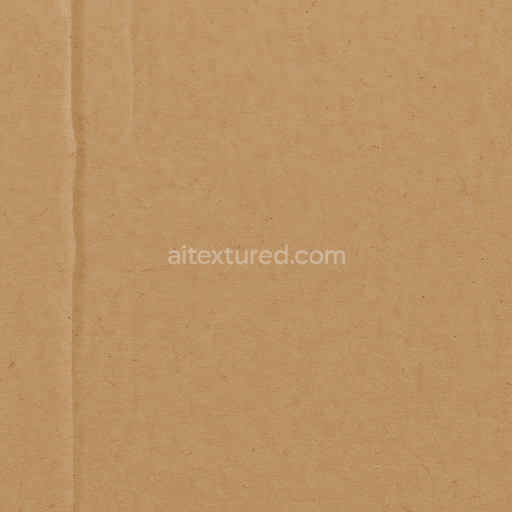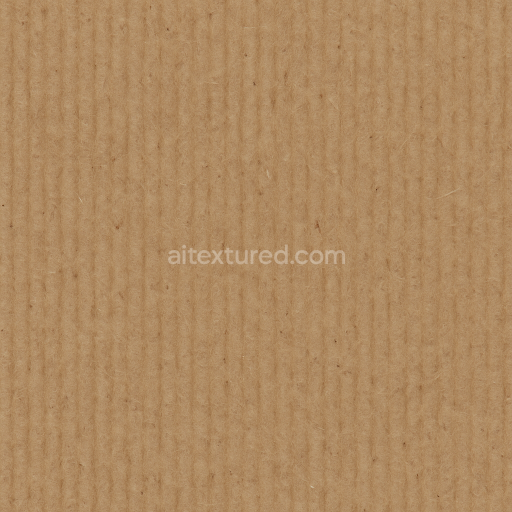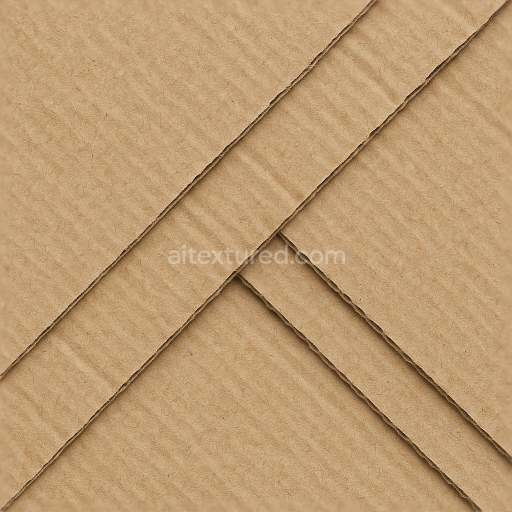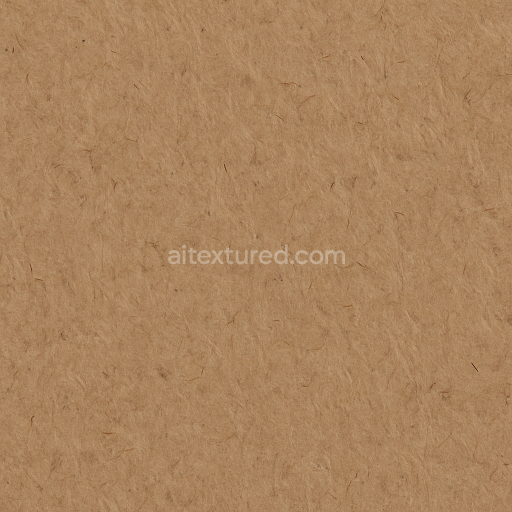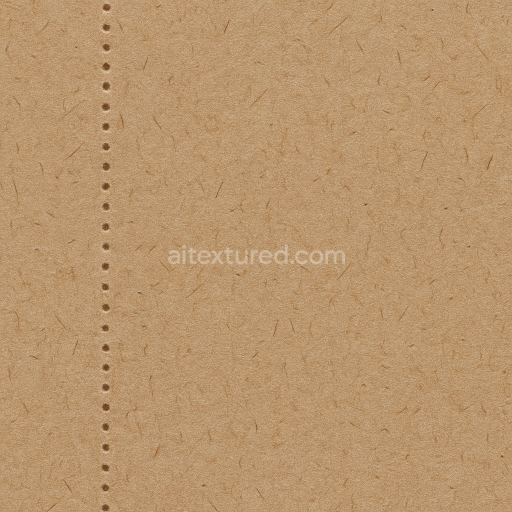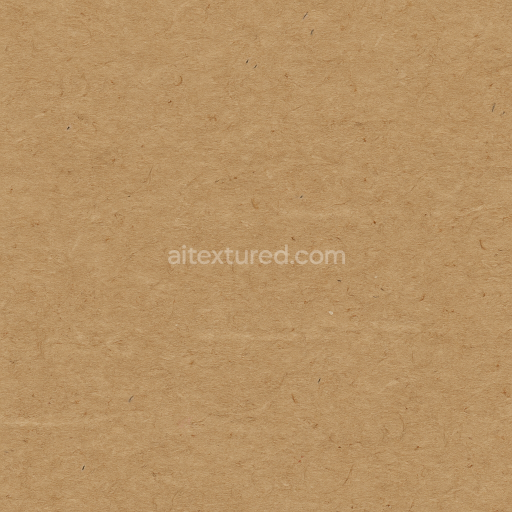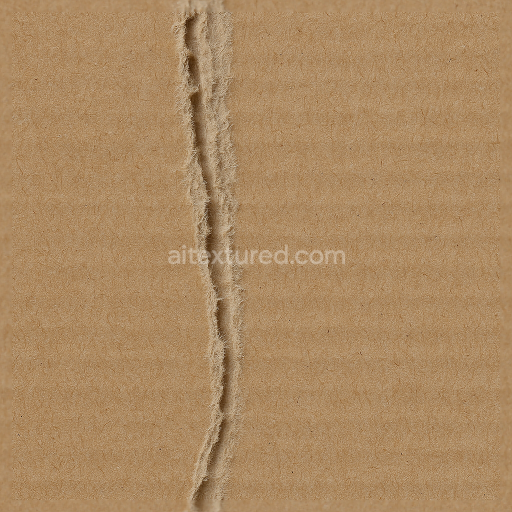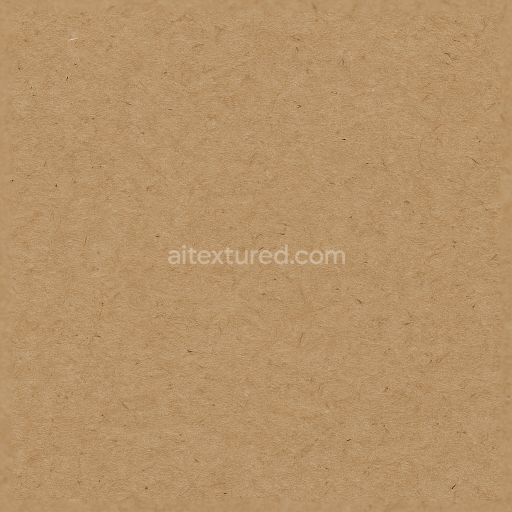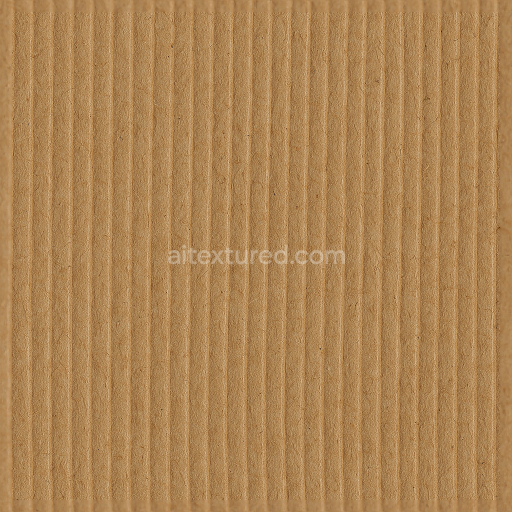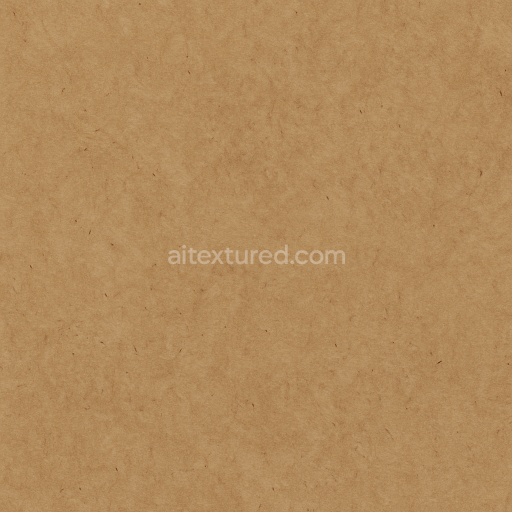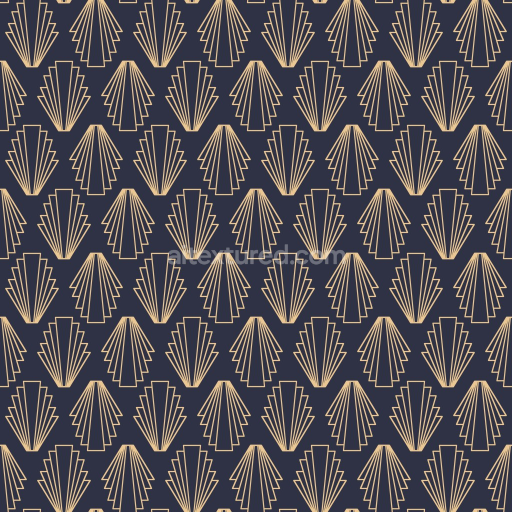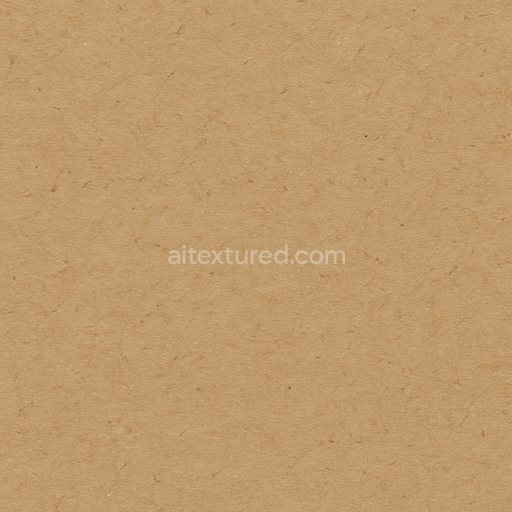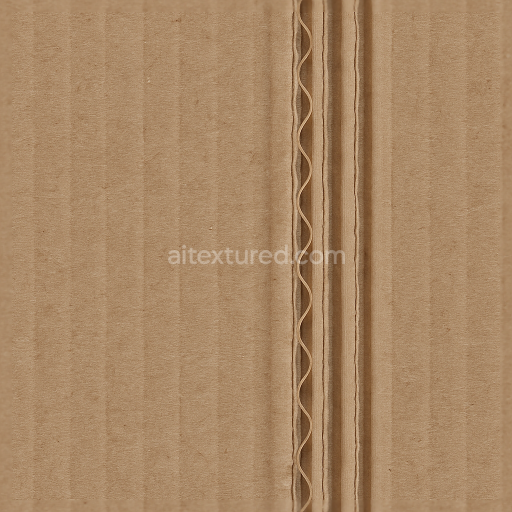Seamless Cardboard 001 by Textures is a high-quality PBR 3D texture meticulously crafted to replicate the intricate composition and surface characteristics of natural cardboard material. Cardboard is an organic composite primarily composed of cellulose fibers derived from wood pulp bonded together with adhesives to form a sturdy yet lightweight substrate. Its surface reveals a fibrous grain orientation subtle porosity and occasional weathering effects such as minor tears or broken edges all contributing to its tactile authenticity. The coloration typically ranges in warm brown tones influenced by natural pigments and the aging process which is accurately reflected in the Base Color (Albedo) texture channel. The Normal map captures the fine fiber patterns creases and uneven surface relief enhancing the perception of depth and texture under dynamic lighting conditions. Roughness values vary across the surface to simulate the matte slightly coarse finish typical of cardboard while the Ambient Occlusion channel adds subtle shadowing to emphasize crevices and folds. This texture set also includes Height/Displacement maps to enable realistic surface modulation ideal for advanced rendering workflows.
Designed with modern rendering workflows in mind Seamless Cardboard 001 is fully optimized for seamless tiling and consistent shading across multiple engines including Blender Unreal Engine and Unity. Its resolution ranges up to an impressive 8K ensuring detailed close-up renders without loss of quality. The texture pack aligns perfectly with physically based rendering principles allowing it to behave predictably under various lighting environments. In Blender it integrates smoothly with the Principled BSDF shader using the Base Color Normal Roughness and Ambient Occlusion inputs. For Unreal Engine feeding the Base Color Roughness Normal and AO maps into the respective material slots yields highly realistic results. Similarly in Unity’s Universal Render Pipeline (URP) and High Definition Render Pipeline (HDRP) these channels connect directly to the Lit shader making material setup straightforward and efficient.
To maximize realism when using this cardboard texture it is recommended to maintain consistent texel density across your UV layouts to avoid distortion or pixelation on large surfaces. Additionally applying triplanar or layered UV mapping techniques can effectively disguise any visible repetition especially on expansive models or architectural elements. For enhanced surface detail combining the Normal map with Height or Parallax Occlusion mapping can create a convincing illusion of depth and tactile variation. When importing textures ensure the Base Color map is set to sRGB color space for accurate color reproduction whereas data maps such as Normal Roughness Ambient Occlusion and Height should use Non-Color to preserve their integrity within the shader pipeline.
This seamless cardboard texture is released under the public domain license granting freedom to use modify and redistribute it for both personal and commercial projects without restriction. Its physical accuracy and technical optimization make it an excellent choice for artists and developers aiming to simulate realistic cardboard materials in 3D scenes product visualizations or game environments. Whether you are creating packaging prototypes architectural mockups or environmental props Seamless Cardboard 001 offers a reliable high-resolution solution that enhances visual fidelity while maintaining efficient workflow compatibility across leading 3D engines.
How to Use These Seamless PBR Textures in Blender
This guide shows how to connect a full PBR texture set to Principled BSDF in Blender (Cycles or Eevee). Works with any of our seamless textures free download, including PBR PNG materials for Blender / Unreal / Unity.
What’s inside the download
*_albedo.png — Base Color (sRGB)*_normal.png — Normal map (Non-Color)*_roughness.png — Roughness (Non-Color)*_metallic.png — Metallic (Non-Color)*_ao.png — Ambient Occlusion (Non-Color)*_height.png — Height / Displacement (Non-Color)*_ORM.png — Packed map (R=AO, G=Roughness, B=Metallic, Non-Color)

Quick start (Node Wrangler, 30 seconds)
- Enable the addon: Edit → Preferences → Add-ons → Node Wrangler.
- Create a material and select the Principled BSDF node.
- Press Ctrl + Shift + T and select the maps
albedo, normal, roughness, metallic (skip height and ORM for now) → Open.
The addon wires Base Color, Normal (with a Normal Map node), Roughness, and Metallic automatically.
- Add AO and Height using the “Manual wiring” steps below (5 and 6).
Manual wiring (full control)
- Create a material (Material Properties → New) and open the Shader Editor.
- Add an Image Texture node for each map. Set Color Space:
- Albedo → sRGB
- AO, Roughness, Metallic, Normal, Height, ORM → Non-Color
- Connect to Principled BSDF:
albedo → Base Colorroughness → Roughnessmetallic → Metallic (for wood this often stays near 0)normal → Normal Map node (Type: Tangent Space) → Normal of Principled.
If details look “inverted”, enable Invert Y on the Normal Map node.
- Ambient Occlusion (AO):
- Add a MixRGB (or Mix Color) node in mode Multiply.
- Input A =
albedo, Input B = ao, Factor = 1.0.
- Output of Mix → Base Color of Principled (replaces the direct albedo connection).
- Height / Displacement:
Cycles — true displacement
- Material Properties → Settings → Displacement: Displacement and Bump.
- Add a Displacement node: connect
height → Height, set Midlevel = 0.5, Scale = 0.02–0.08 (tune to taste).
- Output of Displacement → Material Output → Displacement.
- Add geometry density (e.g., Subdivision Surface) so displacement has polygons to work with.
Eevee (or lightweight Cycles) — bump only
- Add a Bump node:
height → Height.
- Set Strength = 0.2–0.5, Distance = 0.05–0.1, and connect Normal output to Principled’s Normal.
Using the packed ORM texture (optional)
Instead of separate AO/Roughness/Metallic maps you can use the single *_ORM.png:
- Add one Image Texture (Non-Color) → Separate RGB (or Separate Color).
- R (red) → AO (use it in the Multiply node with albedo as above).
- G (green) → Roughness of Principled.
- B (blue) → Metallic of Principled.
UVs & seamless tiling
- These textures are seamless. If your mesh has no UVs, go to UV Editing → Smart UV Project.
- For scale/repeat, add Texture Coordinate (UV) → Mapping and plug it into all texture nodes.
Increase Mapping → Scale (e.g., 2/2/2) to tile more densely.
Recommended starter values
- Normal Map Strength: 0.5–1.0
- Bump Strength: ~0.3
- Displacement Scale (Cycles): ~0.03
Common pitfalls
- Wrong Color Space (normals/roughness/etc. must be Non-Color).
- “Inverted” details → enable Invert Y on the Normal Map node.
- Over-strong relief → lower Displacement Scale or Bump Strength.
Example: Download Wood Textures and instantly apply parquet or rustic planks inside Blender for architectural visualization.
To add the downloaded texture, go to Add — Texture — Image Texture.

Add a node and click the Open button.

Select the required texture on your hard drive and connect Color to Base Color.

